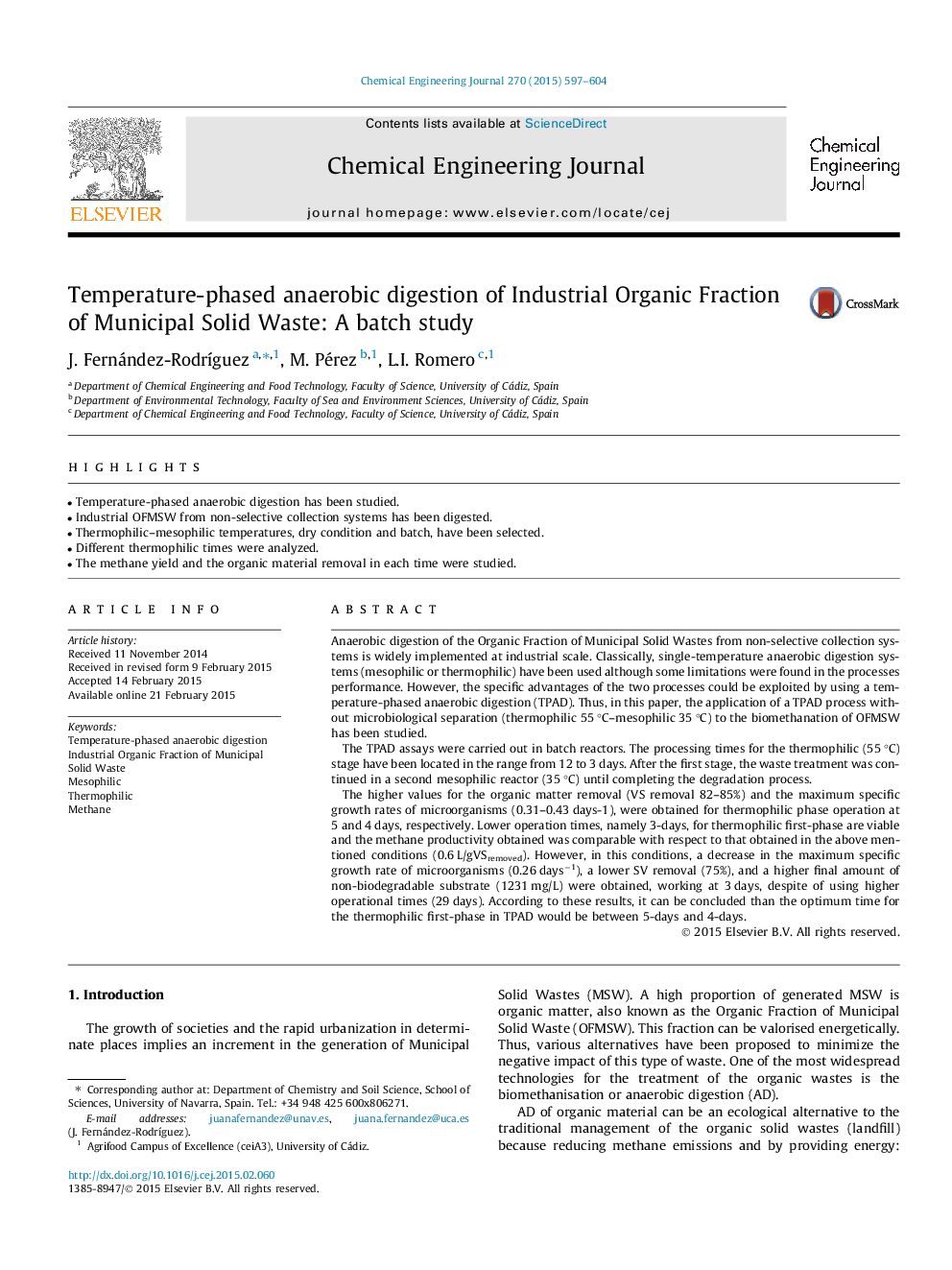| کد مقاله | کد نشریه | سال انتشار | مقاله انگلیسی | نسخه تمام متن |
|---|---|---|---|---|
| 146477 | 456371 | 2015 | 8 صفحه PDF | دانلود رایگان |
• Temperature-phased anaerobic digestion has been studied.
• Industrial OFMSW from non-selective collection systems has been digested.
• Thermophilic–mesophilic temperatures, dry condition and batch, have been selected.
• Different thermophilic times were analyzed.
• The methane yield and the organic material removal in each time were studied.
Anaerobic digestion of the Organic Fraction of Municipal Solid Wastes from non-selective collection systems is widely implemented at industrial scale. Classically, single-temperature anaerobic digestion systems (mesophilic or thermophilic) have been used although some limitations were found in the processes performance. However, the specific advantages of the two processes could be exploited by using a temperature-phased anaerobic digestion (TPAD). Thus, in this paper, the application of a TPAD process without microbiological separation (thermophilic 55 °C–mesophilic 35 °C) to the biomethanation of OFMSW has been studied.The TPAD assays were carried out in batch reactors. The processing times for the thermophilic (55 °C) stage have been located in the range from 12 to 3 days. After the first stage, the waste treatment was continued in a second mesophilic reactor (35 °C) until completing the degradation process.The higher values for the organic matter removal (VS removal 82–85%) and the maximum specific growth rates of microorganisms (0.31–0.43 days-1), were obtained for thermophilic phase operation at 5 and 4 days, respectively. Lower operation times, namely 3-days, for thermophilic first-phase are viable and the methane productivity obtained was comparable with respect to that obtained in the above mentioned conditions (0.6 L/gVSremoved). However, in this conditions, a decrease in the maximum specific growth rate of microorganisms (0.26 days−1), a lower SV removal (75%), and a higher final amount of non-biodegradable substrate (1231 mg/L) were obtained, working at 3 days, despite of using higher operational times (29 days). According to these results, it can be concluded than the optimum time for the thermophilic first-phase in TPAD would be between 5-days and 4-days.
Journal: Chemical Engineering Journal - Volume 270, 15 June 2015, Pages 597–604
